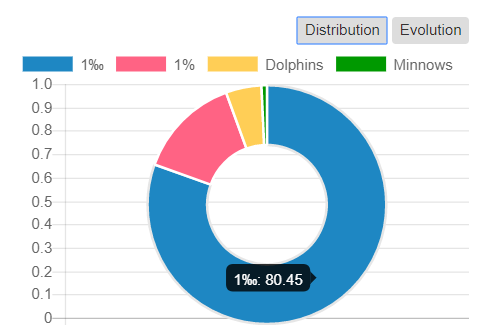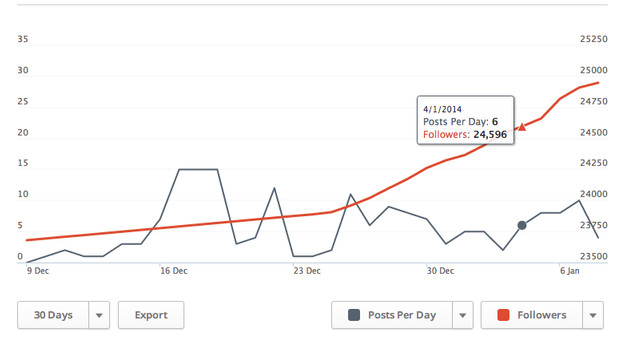5 All-Too-Real Truths About Steemit
I've been posting on this site for about half a year now, and I've come across a few trends that I'd like to share with the rest of the community. Some are funny, some are sad, but all are indicative of what the Steemit community looks like today.
1. Bullish posts get more love than bearish ones.

Who says "don't kill the messenger?"
Steemit enrollment tends to come in waves--especially when the cryptomarket is on a runaway bull run. When that happens (and especially recently), new investors tend to opt for lesser-known stocks in the hopes of making a huge profit overnight.
These newer investors are still learning about the blockchain (aren't we all) and seek out validation for their crypto picks.
While bearish entries often have a great depth of analysis and sound advice, they do not make as good a return as bullish posts. In fact, some investors are so closed off to bad news, they'll downvote helpful-but-scary bearish content!
2. There is a 1%.

In the United States, the top 1% of earners have control over 38% of the nation's wealth, a figure so jarring that it spiked months of protests during Occupy Wall Street.
That's a joke compared to Steemit.
According to data from SteemWhale, the top 1% of Steemit accounts have 80.45% of the social media site's estimated value.

(That said, I personally don't care about what other people make compared to how much I make--I just care about how much I make, period.)
In another Steemit post, @hisnameisolllie says this distribution may be because of the influx of signups. I tend to agree. But I also think that as Steemit levels out, there will still be a stark distribution--maybe not 80%, but closer to 75%. Between dead accounts and lifetime users, that wealth will likely never redistribute.
3. It can be tough to find quality content.

Each Steemit post curates its payout over the course of seven days.
In content marketing, most writers tend to aim for "long-tail keywords" with the hope of content being found on the front page of Google in the long-term (like 6+ months after the post was written). Google generates so much traffic that daily updates on blogs hardly make sense. Traffic for those kinds of sites tend to start off very low and then earns regular traffic over time. Short-term posts--think Twitter--get engagement right away but then don't have long-term sustainability.

As such, some users have figured out that they have better luck capturing audience attention if they spam lots of short, unhelpful, often plagiarized posts in the hope of garnering upvotes.
Just take the Cheetah bot; this plagiarism checker catches so many people posting duplicate content that it releases a daily report with over 1,500 offenders. And when those offenders post multiple times a day, it's not surprising that Steemit gets a ton of spam.
FWIW, I recommend reading "The 10 Commandments of Upvoting on Steemit" by @averagejoe if you're looking to figure out what to vote on.
4. You can generally find some of the best high-quality, original content in creative categories.

Whether it's hidden in the art, photography, or writing topics, the art community is very healthy here on Steemit. In fact, it was the opportunity to participate in art contests that drew me into the site in the first place.
While the blockchain and cryptocurrency generally brings users in, investors often get so wound up in the latest crypto-fad that they miss all the great original content created just for Steemit.
Luckily, contests have been found to be a great way of garnering followers. So while contest hosts don't always feel invested in the content made for them, these contests can encourage original, unique, "sticky content"--which will ultimately make Steemit valuable in the long run.
5. Steemit has a while to go before mass adoption. That said, it has a chance.

Remember that "long-tail" thing with Google that I mentioned above? Steemit is starting to show up in search engine results, which is bringing in a ton of new users--particularly bloggers--to the platform.
I don't think it's going to be a Facebook or Twitter competitor, but it's already taking on Medium and Reddit. The community is growing exponentially, and that's unlikely to stop.
However, until Steemit becomes a recognized brand, it has no chance of garnering mass adoption. The platform is still in its infancy, and has a long way to go before becoming the de facto blogging site.
More?
Did you find this post helpful? Engaging? Want to see more like it? Be sure to upvote, resteem, and follow!
And as for more "too-true" truths: did any of these hit home for you? Do you think I got anything wrong? Missed something? Let me know in the comments!

nice post @rachelburger! Its true about the 1% and i like what you said about contest holders and participants! I have seen the trend increasing alot in people creating contests but i feel like its a good way for users to be creative and also be a part of a community! Its a good start! Anyways look forward to see more of your post!
Thanks @your.system! Contests are also an easy way for minnows to get involved with Steemit too :)
Yeah we really have to work with the algorithm here to fix the Steemit wealth gap. Or the algorithm is perfect and we just have to catch up. We could be making hundreds a day in no time, just post what you post and wait for the followers.
Resteemed by @resteembot! Good Luck!
Curious?
The @resteembot's introduction post
Get more from @resteembot with the #resteembotsentme initiative
Check out the great posts I already resteemed.
Great pos! I really like your view on the platform and how peeps perceive it... particularly relating to the strategies being utilized. Very interesting indeed
Nice analysis and observations